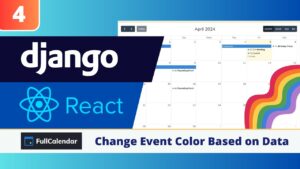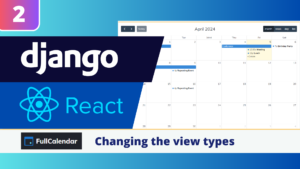In this blogpost we will tell you everything you need to know about React JS. We will tell you what it is, what the advantages and disadvantages of the framework are, and even dive in the backends which are best compatable with the framework.
What is React JS?
React is a JavaScript library for building user interfaces. It was developed and is maintained by Facebook, and is widely used for building web and mobile applications due to its flexibility and performance. React allows developers to build reusable components, manage the state of the application, and render updates efficiently with the help of a virtual DOM.
The popularity of the framework is clearly noticable when looking at the great list of companies that use the software which include Netflix, AirBnB, Dropbox, Walmart, and Tesla.

Advantages of React JS
React has several advantages, including:
- Virtual DOM: React uses a virtual DOM that makes updates and rendering faster, compared to manipulating the real DOM directly.
- Reusable Components: React allows developers to build and reuse UI components, making it easier to maintain the code and create a consistent look and feel for the application.
- Easy to Learn: React has a relatively simple API and follows a declarative approach, making it easier to learn and understand, especially for developers familiar with JavaScript.
- SEO Friendly: React applications can run on the server and the virtual DOM can be rendered to the browser, improving the SEO of the application.
- Strong Community: React has a large and active community of developers who contribute to the library and provide support, making it easier to find help and resources.
- Popularity and Adoption: React is one of the most popular JavaScript libraries and is widely used by companies such as Facebook, Netflix, and Airbnb, among others.
Disadvantages of React JS
While React has several advantages, it also has some disadvantages that are worth considering:
- Steep learning curve: While React is relatively easy to learn, it can still be challenging for developers who are new to JavaScript or who have limited experience with front-end development.
- JavaScript fatigue: React requires a deep understanding of JavaScript and its ecosystem, and as a result, can contribute to what some developers call “JavaScript fatigue”.
- Complexity with larger applications: React applications can become complex, especially as the size and scale of the application grows, making it harder to manage and maintain.
- Limitations with server-side rendering: React’s server-side rendering capabilities are limited, and the development of server-side rendering applications can be challenging, especially for developers who are not familiar with Node.js.
- Performance concerns: React’s performance can be affected by the size and complexity of the application, and by the way it is used and implemented. Careful consideration and optimization are required to ensure that React applications perform well.
Best backend framework to use with React JS
There is no one-size-fits-all answer to what the best backend for React is, as the choice depends on various factors such as the requirements of the application, the development team’s expertise, and the desired performance, scalability, and security characteristics. However, here are some popular backend options that are often used with React:
- Node.js and Express: Node.js and Express provide a fast, scalable, and flexible backend for React applications. They are easy to set up and have a large and active community, making it easier to find help and resources.
- Ruby on Rails: Ruby on Rails can be used as a backend for React, especially for applications that require a more structured and opinionated framework.
- Django: Django is a high-level Python web framework that can be used as a backend for React, providing a robust and secure platform for building applications.
- Firebase: Firebase is a Backend-as-a-Service (BaaS) provided by Google that allows developers to build applications without worrying about the server-side logic. Firebase is a good option for smaller projects or prototyping.
Ultimately, the best backend for React will depend on the specific requirements and constraints of the project, so it’s important to carefully evaluate different options and choose the one that fits the needs of the project best.
Comparable frameworks
Other JavaScript frameworks that are similar to React include:
- AngularJS: An open-source framework for building dynamic single-page applications.
- Vue.js: A progressive JavaScript framework for building user interfaces.
- Ember.js: A JavaScript framework for creating scalable single-page web applications.
- Backbone.js: A lightweight JavaScript library for building web applications.
- Svelte: A new type of JavaScript framework that compiles code to vanilla JavaScript at build time.
All of these frameworks have their own strengths and weaknesses, and the choice between them often depends on the specific requirements of a project.
By comparing the installs on NPMs website we can get a grasp on which framework is used the most. Over the past 9 years React is consistently used most amongs the most popular frontend languages.

BEWARE: The peaks of Vue and Svelte in december are clearly OUTLIERS and not representative for the actual downloads. NPM has not provided an official explanation, but users suspect a mistake in automated builds or a bot overperforming.
React JS, the most popular frontend framework
This tutorial has hopefully provided you with all information you would like to have regarding React JS! If you have any questions feel free to reach out or place a comment.





